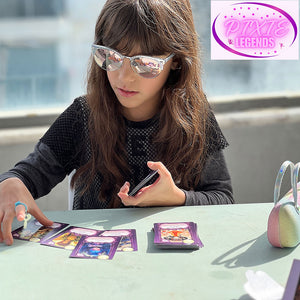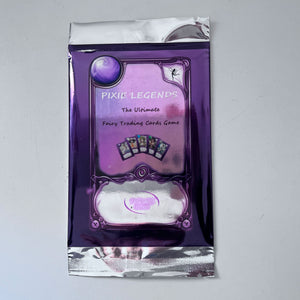Every culture has its own set of folklore and mythical beliefs. Fairies or ‘fey’ or ‘the good people are a part of belief in the supernatural. People believe in different kinds of fairies; water fairies, tree fairies, rainbow fairies, and flower fairies, among many others. Have you ever wondered why gardeners do certain things? Folklore and traditions are an integral part of the gardening culture. Many plants get their names from an old wives’ tale of a mystical story passed down through generations.
History is filled with folklore about plants and their uses. Interestingly, each story has a moral and serves a bigger purpose. Fairies, elves, and other tiny creatures are closely associated with nature in many ways. Northern European folklore is filled with stories about flower fairies. It is believed that a fairy lives within each flower and looks after it. It is also said that the fairy possesses the same personality as the plant. Some stories have been spun to protect specific trees and plants. To hurt the plant is the same as hurting the fairy and would lead to bad luck. Similarly, all across the globe, people believe in stories and traditions that personify plants.
Let’s delve into the world of flowers and the folklore that surrounds each one.
Foxglove Fairies
The foxglove or digitalis plays a significant part in fairy lore. It is believed that fairies wear the foxglove flower as hats and gloves. If you see a foxglove bending, it would mean that the flower is bending down to receive the fairy. The flowers get their unique name from a story that says fairies give the flowers to foxes to cover their feet so they can enter chicken coops undetected.
Another story that revolves around this beautiful flower is bad luck befalls anyone who touches or tries to destroy the plant. Children were warned from touching the plant so they would not wake the fairies from their slumber. Another story we hear is that if a child touches the plant, he would be affected by poison and get sick. The foxglove is also known as a witches’ thimbles.
The Four-Leaf Clover
This plant is popularly known for bringing good luck to the one who finds it, but the stories don’t end there. It is believed that the four-leaf clover only appears where elves gather and frolic. If a girl found this lucky plant, she would find her true love before that day ended.
Columbine
A columbine grows nice and tall with attractive pink flowers, and Hummingbirds favor this plant over others. The columbine is a symbol of folly because its spur-like petals look like a court jester’s hat. The spurs resemble little shoes with turned-up toes when they drop off from the plant, and they are also called Mary’s shoes.
Cowslips Fairies
The cowslips have bright, vivid colors, and they grow in ditched or damp areas. They are also known as fairy cups as it is believed that fairies like to nestle in the drooping bell of cowslips flowers. Stories say that these magical flowers reveal fairy gold that is buried nearby. The famous writer Shakespeare often referred to the cowslip in his plays. The fairy in the Tempest, Ariel, was found lying in the cowslip’s bell.
Daylilies Fairies
It is believed that if one plants lilies in their garden, they will protect that house from ghosts and other unwanted intruders. According to folklore, Oberon, the king of the fairies and elves, carried a lily as his magic wand. It is believed that each lily has its own elf, who is born with the plant, lives inside it, and dies with it.
Forget-Me-Nots
The flower of forget-me-not symbolizes true love and fond memories. In 15th century Germany, it was believed that the wearer of this flower would always be remembered by their lovers. A story says that in ancient times, a knight was walking with his lady alongside a river. The two lovers came across a posy of flowers, when the knight tried to pick them up, he fell into the river because of the weight of his armor. As he was swept away by the current of the river, he threw the posy to his beloved and shouted, ‘Forget me not!’
Pansy
Pansy is called ‘fairy-faced’ flowers because of their petals which resemble a tiny face. This beautiful flower is associated with love throughout history. The fairy spirit from Shakespeare’s play, ‘A Midsummer Night’s Dream’ used the juice of magical pansies to make a potion that would make a person fall madly in love with the next creature he beholds.
Daisy
The flower daisy is associated with all things happy. They literally mean ‘bubbling over with happiness.’ The flower signifies celebration, appreciation, and a positive outlook for the simple things in life. According to tradition, the daisy flower is used to find out how the other person feels. Does ‘he love me… he loves me not’ ring any bells?
Lady Slippers
These rare beauties have many legends associated with them. A Native American legend tells the story of a tiny Indian princess who met a rabbit with an injured foot. He was unable to go home, and therefore, the princess gave her own moccasins to it. As the princess was returning back to her home, her feet got sore and started to bleed from the stones. Shattered by the pain, she sat down and fell asleep. A flying bird spotted the little princess and asked the Great Spirit in the sky to come to her assistance. When she woke up, she saw the most exquisite pair of lady’s slipper moccasins hanging on the stems beside her. It is believed that the red-purple spot and red lines inside the flower are marks left from the Indian princess’ feet.
Peony
The delicate peonies are considered to have the power to shield from evil spirits in Greece. In other parts of Europe, people would collect the peony seeds and string them in a white garland to ward off evil.
Fairy folk come in many forms, and the flower fairies are the most beautiful fey known to man.









